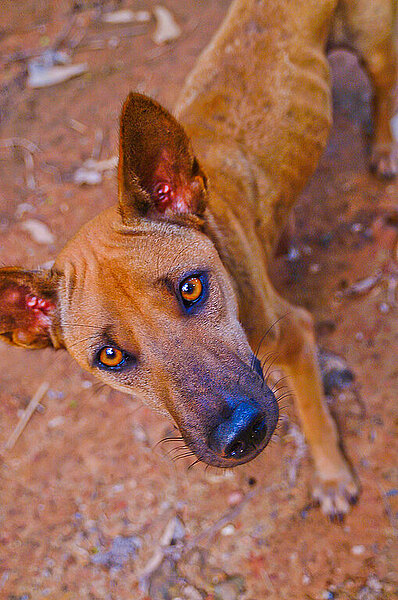Hallucinations

Hallucinations are perceptions that do not correspond to reality. They can take various forms, such as sounds, images, smells or touch. Hallucinations can occur in humans, but also in animals. You can find out more about hallucinations in dogs in this article.
Causes of hallucinations in dogs
There are several factors that can trigger hallucinations in dogs. Some of these are:
- Medications: some medications used to treat pain, epilepsy, anxiety or other conditions can cause hallucinations as a side effect. This can be temporary or permanent, depending on the dosage and duration of use.
- Diseases: Some diseases that affect the brain or nervous system can also cause hallucinations. These include, for example, tumors, strokes, infections or degenerative diseases such as Alzheimer's or dementia.
- Age: As dogs age, they can suffer from cognitive dysfunction similar to Alzheimer's disease in humans. This can lead to confusion, disorientation and hallucinations.
- Stress: Stress can be both physical and psychological and can affect a dog's well-being. Stress can be triggered by various factors, such as noise, moving house, loss of a caregiver or conspecific, or lack of activity.
- Trauma: Traumatic experiences, such as abuse, neglect or violence, can lead to post-traumatic stress disorder (PTSD). PTSD can manifest itself in the form of flashbacks, nightmares or hallucinations.
Symptoms of hallucinations in dogs
Hallucinations in dogs can manifest themselves in various ways. Some typical signs are:
- The dog reacts to something that is not there. It barks, growls, howls or wags its tail for no apparent reason.
- The dog pursues something with its eyes or head that is not visible. It looks up in the air or at the wall and moves back and forth.
- The dog sniffs or licks something that is not there. It smells or tastes something that only it can perceive.
- The dog suddenly twitches or trembles. It feels something on its skin or fur that is not real.
- The dog appears anxious or aggressive. He is afraid of something that only he sees or hears, or he defends himself against it.
Treatment of hallucinations in dogs
If you suspect that your dog is suffering from hallucinations, you should take him to a vet. The vet can determine the cause of the hallucinations and recommend a suitable treatment. Treatment may vary depending on the case, but some possible measures include
- Medication: If the hallucinations are caused by medication, the vet may adjust the dosage or prescribe a different medication. If the hallucinations are caused by a medical condition, the vet may prescribe medication to relieve the symptoms or address the cause.
- Behavioral therapy: If the hallucinations are caused by stress or trauma, behavioral therapy can help. The dog is gradually accustomed to the triggering stimuli and learns to form positive associations. Behavior therapy should always be carried out by a qualified animal psychologist.
- Environmental adaptation: If the hallucinations are caused by age or cognitive dysfunction, environmental adaptation can help. This involves providing the dog with a calm, safe and familiar environment that stimulates its senses but does not overwhelm it. This may include toys, chew toys, music or aromatherapy.
Hallucinations in dogs are no reason to panic, but neither are they a sign of normality. They can indicate serious problems that require veterinary examination and treatment. If you want to help your dog, you should take his symptoms seriously and offer him the support he needs.
The authors assume that a veterinarian should be consulted if an animal is ill and that medication should only be taken after consultation with a doctor or pharmacist. Only an individual examination can lead to a diagnosis and treatment decision.
We help you find the nearest vet → This way